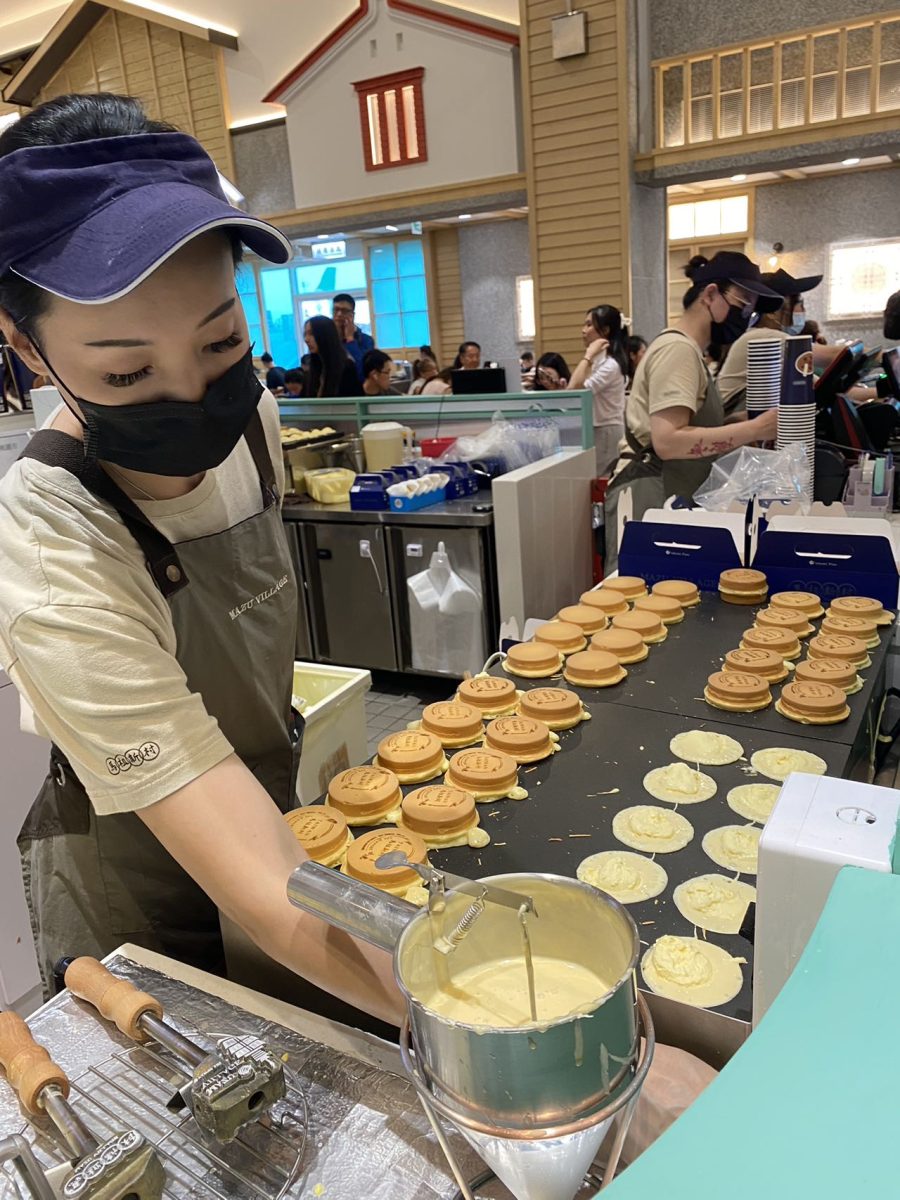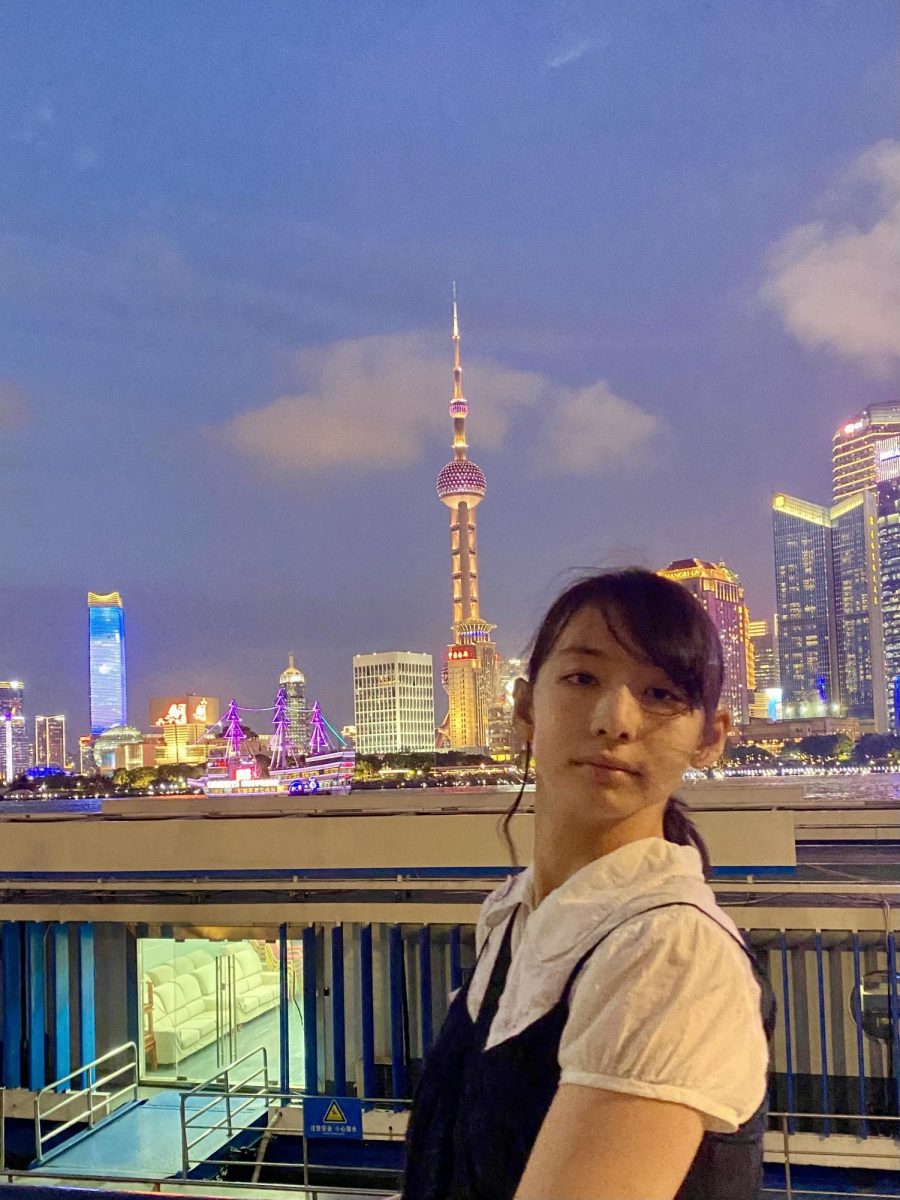Last summer, I was whisked off to China a few days before school officially ended, as my mom planned for us to have some girl time in her home country. I did not expect to have 3 weeks of it.
We first stopped at Taiwan after a long flight from Chicago because we had to take another connecting flight to get to mainland China. We had a few hours before our flight, so we killed some time in Taiwan Taoyuan International Airport.
This wasn´t your standard airport; it seemed almost like a museum, with interactive exhibits and some of the architecture even resembling the buildings of old.The two of us, starving, shared a big bowl of beef noodle soup with wontons, finishing our meal naturally with taro bubble tea and a new treat we hadn’t tried before — wheel pies.
Picture a thick round of pancake batter stuffed with gooey fillings such as custard or sweetened red bean paste.
We landed in Beijing after a long haul flight and stayed there for the next few days.
The first thing I actually ate after we got picked up from the airport was a hawthorne popsicle, a childhood favorite of mine as well as my mom’s. You likely have not heard of Chinese Hawthorne, but it has a pleasantly sweet and sour taste. My late Nai Nai, or grandma, always kept the freezer packed with them whenever we planned to visit her.
In addition, my Jiu-ma, or aunt, had bought me some mangosteen, a favorite fruit of mine which I hadn’t eaten since my last trip to China prior to the pandemic. I was in Guangzhou at the time, a rainy city in the south where I could find mangoes bigger than my hand with pits that seemed dwarflike in comparison. Mangosteen is a tropical fruit native to the islands of Southeast Asia, but it is popular in and frequently imported to China. The fruit has a thick, dark, reddish-purple rind which reveals pale segments once split open, like those of an orange. These are sweet and tangy, but filled with seeds.
Our hotel was situated in the heart of Beijing, which consisted of hutongs, tight alleys formed by small shops and traditional courtyard residencies. Not many of these exist anymore outside of Beijing, mainly replaced by city high rises. After a visit at the Forbidden City Palace complex, we stopped for lunch at a food court, coming across a vendor selling one of my all-time favorites, Tanghulu. These sugar coated fruit skewers are traditionally made using hawthorne berries and are usually sold during fall and winter, as the heat of summer would melt the sugary coating and make for a sticky treat. It was just my luck this year that it was not too hot to have one.
My mom later took me to a popular confectionary, where I first set my eyes on Ludagun.
Ludagun literally means rolling donkey in Mandarin, as the treat´s toasted yellow soybean flour coating brings to mind the coat of a donkey covered with sand or dirt. It consists of a long strip of sticky rice cake topped with sweetened red bean paste and then rolled up and cut into small cylinders, like a roll cake. We got some along with some other traditional Chinese sweets, including jujube (Chinese date) paste filled flower cakes.
Moving on to savory foods, I always have Peking duck when I´m in Beijing. The duck is well known for its impossibly thin, crispy skin and powerful flavor. It’s always served with slivers of cucumber and thin pancakes, which you are expected to wrap the fillings with.
I had a food and costume experience all in one at the Palace Banquet, a newly opened restaurant that incorporated dishes from the court of China’s various dynasties but combined them with modern tastes to appeal to the young and old alike. It was just my luck that it was situated only a few minutes away from my hotel. They charged extra for selecting traditional clothing to wear from an array of different dynasties, as well as makeup, but it was well worth it to dress up like a lady of the Tang Dynasty.
It was a meal consisting of several courses, but I was not stuffed at the end as they were fairly small. I was served classics such as silky pea pudding, ham and tofu puff soup, and fatty stewed pork over rice. I can’t recall another time I’ve drunk so much tea.
Xi’an/Shaanxi
In Xi’an, a bustling city well known for its past as the capital of China during the heyday of the Tang Dynasty, I came across Roujiamo. It consists of stewed pork sandwiched between two flaky flatbread rounds. The meat stuffed between the buns is usually quite flavorful, as it is cooked in a soup containing as many as 20 spices. It can vary from vendor to vendor, sometimes saltier than others.
I also visited the Muslim quarter, where I tried paomo, lamb soup laden with delightfully chewy shreds of flatbread that have been rendered tender by soaking in the soup. It’s usually very hard and dense when dry. I never did get to try Huluji, or gourd chicken until much later, at a Xi’an themed restaurant during my second stay in Beijing. It gets its namesake from its shape, in which it will be boiled and deep fried until tender and crispy. When I ordered it, everything down to the plate was shaped like a gourd.
Shanghai
China´s metropolis is technologically advanced and more well known for its many shopping districts, but it still has a few foods that are synonymous with its name. Xiao Long Bao, or soup dumplings are the most recognizable, known for their thin wrappers as well as being filled to the brim with hot soup and a pork filling. In order to eat one without the mess that comes with most inexperienced diners, you must bite a hole into the wrapper and suck out the soupy contents little by little in order to not burn your mouth or risk tearing the entire dumpling.
Shanghai is also well known for the fine quality of its crabs in the fall, when they put on weight and are at peak flavor. With the abundance of crab, restaurants will put it in everything, from soup dumplings to noodles.
I tried the latter at a mall restaurant appropriately named Supreme Crab on our first night in the city. The noodles were quite nice, but the star of the dish was the crab sauce itself. Consisting of mainly crab meat, it clung beautifully to the noodles, and its flavor was heightened by a dash of soy sauce and ginger.
The good food never stopped, even when we went to the airport to fly back to Taipei on the trip home. We had gotten first class tickets, so I was able to try gua bao in the lounge. Gua bao has to be one of my favorite foods from Taiwan; a slice of red cooked pork sandwiched inside a fluffy, crescent shaped bun, and then topped with toasted peanut powder, fermented mustard greens, and cilantro.
I loved those three weeks and it even inspired us to make some treats at home later that summer.


